Read next: 10 Best Online Meeting Tools for Productive Teams
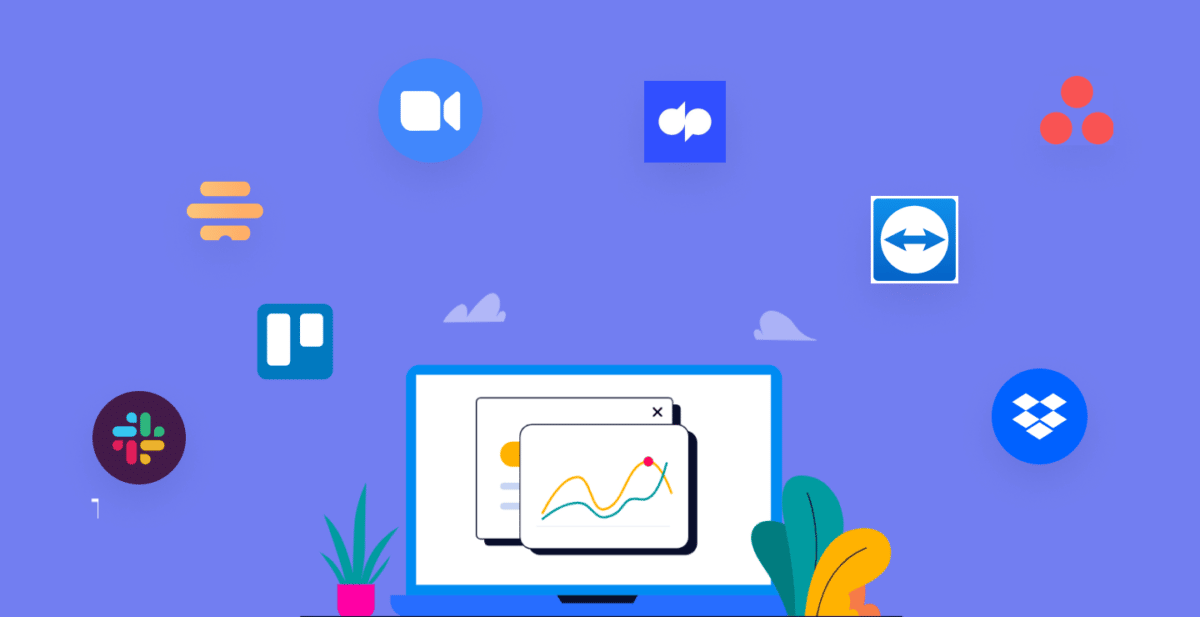
Top 18 Remote Work Tools Every Hybrid & Remote Team Needs
Unlock the power of AI — Notta's meeting assistant records, transcribes and summarizes meeting minutes with one click.
Remote and hybrid work models have become the new norm. According to the latest remote work statistics, 71% of the global workforce prefers hybrid or fully remote work.
Gone are the days of traditional office spaces and rigid schedules, as teams now transcend geographical boundaries and embrace the freedom and flexibility of remote working.
However, this shift brings its own set of challenges. How do you foster effective collaboration when team members are scattered across different time zones? How do you maintain productivity and keep everyone aligned toward shared goals? The answer lies in leveraging the right remote work tools.
From powerful online meeting platforms to intuitive project management software and cutting-edge design collaboration tools, we have curated a list of must-have tools to transform how your team works remotely.
3 online meeting tools
In a remote and hybrid work model with limited face-to-face interactions, online meeting tools provide a platform for virtual gatherings, enabling teams to connect, discuss ideas, and make real-time decisions.
Let's explore some essential tools in this category.
1. Notta
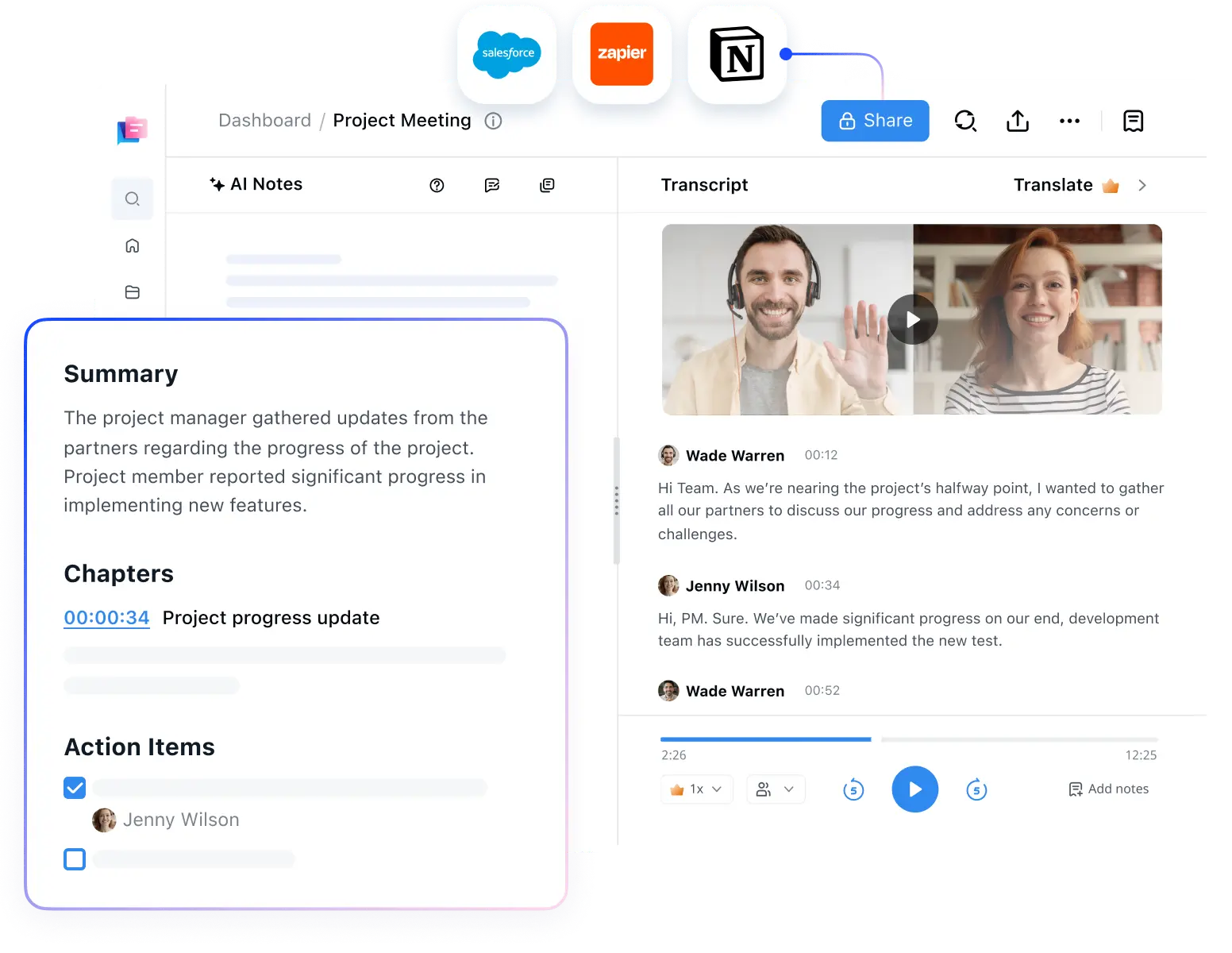
While not being a video conferencing tool, Notta is an AI-powered meeting assistant for platforms like Zoom, Google Meet, and Microsoft Teams to make your meetings efficient and productive.
With Notta, you don’t need multiple tools to manage different aspects of your virtual meetings. From scheduling meetings and taking automated notes to generating a comprehensive meeting summary, Notta makes every bit of task before, during, and after your meeting effortless.
Key Features:
Automatic recording and transcription: Invite the Notta Bot to your meetings and it will automatically generate a live transcript alongside the recording. No more scribbling down notes or worrying about losing important information.
Meeting summary: Instead of manually scrolling through the meeting notes to email a follow-up, Notta leverages AI to extract key information and action items.
Shareable snippet: Create a snippet of the important moments and share the link directly with stakeholders.
AI meeting attendance: Can’t attend a scheduled meeting? No problem. Notta will auto-join scheduled online meetings in your stead and send you a complete transcript. This way, you can review the recordings and transcription of the meeting at your convenience.
Streamline your meeting documentation process with Notta AI meeting assistant. Easily search, review, and share meeting notes.
2. Zoom
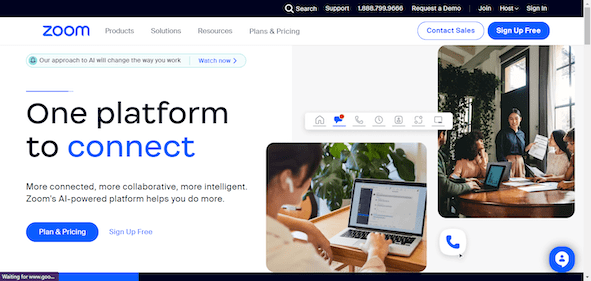
Being the most popular video conferencing tool, Zoom allows remote and hybrid teams to have face-to-face discussions across locations and time zones.
Zoom also allows you to share screens for presentations and has a built-in chat feature that allows participants to send messages, share links, and communicate during meetings.
One feature most users find useful is high-quality video recording and automated captions. You can easily save, reference, and review meeting content later and share it with absent team members.
With a free plan, you can host up to 40-minute meetings with 100 participants. With the Zoom Pro plan, you will enjoy more advanced features like webinars and cloud storage.
Key Features:
Unlimited number of meetings per month
Whiteboarding for easy presentation and training
Secure Socket Layer (SSL) encryption
Chat and messaging (private and group)
Breakout rooms enable team members to divide into smaller groups for focused discussions
3. Google Meet
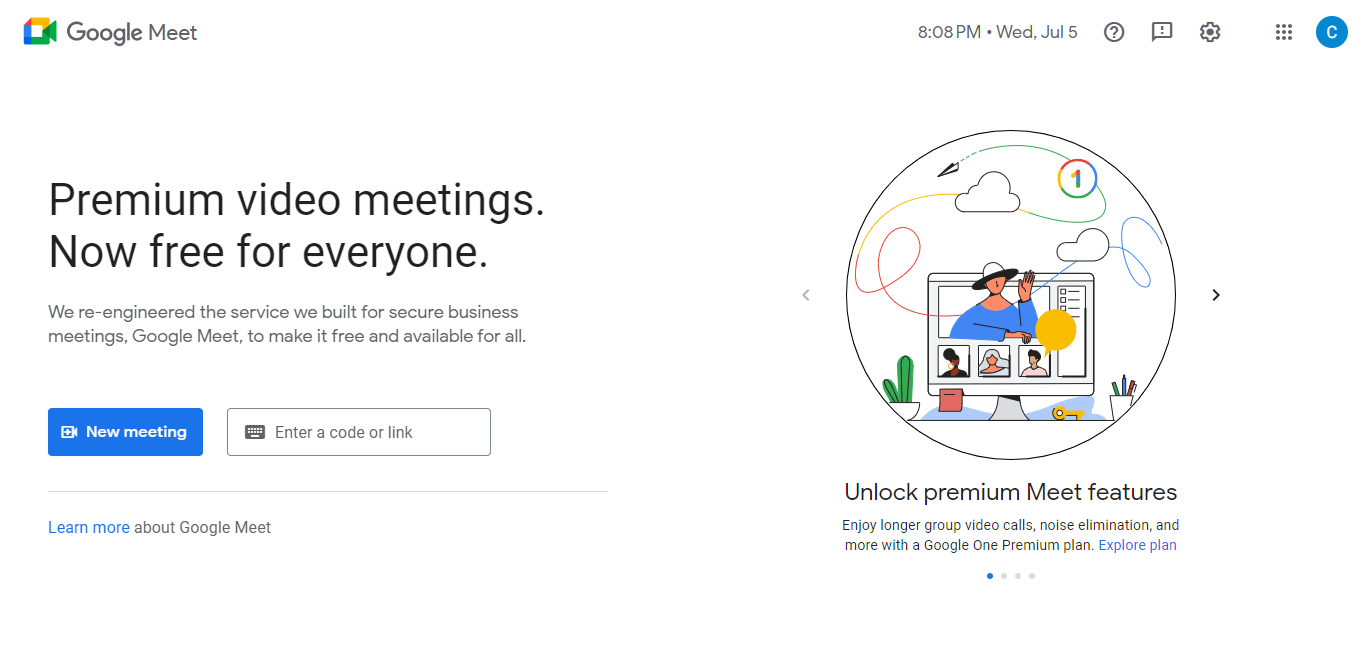
Google Meet is the go-to video conferencing app for Google Workspace workplaces. Its seamless integration with Google's Workspace tools, such as Google Drive, Google Calendar, Google Sheets, Google Slides, and more, makes meeting scheduling, documentation, and management simple.
As a browser-based application, it eliminates the need for complex installations, allowing users to start and join meetings with a single click.
The platform also ensures smooth and distraction-free communication with features like waiting rooms and noise cancellation.
Key Features:
Easy-to-join one-click meetings with no downloads required.
Seamless integration with Google Ecosystem
Flexible Screen sharing capabilities
Meeting records
Virtual whiteboarding
Real-time closed captioning with automatic translation in multiple languages
Customizable participant video layout
4 team chat apps
Efficient team communication is vital for any team, especially in a remote working environment. The following team chat apps provide robust features for real-time and asynchronous messaging.
4. Slack
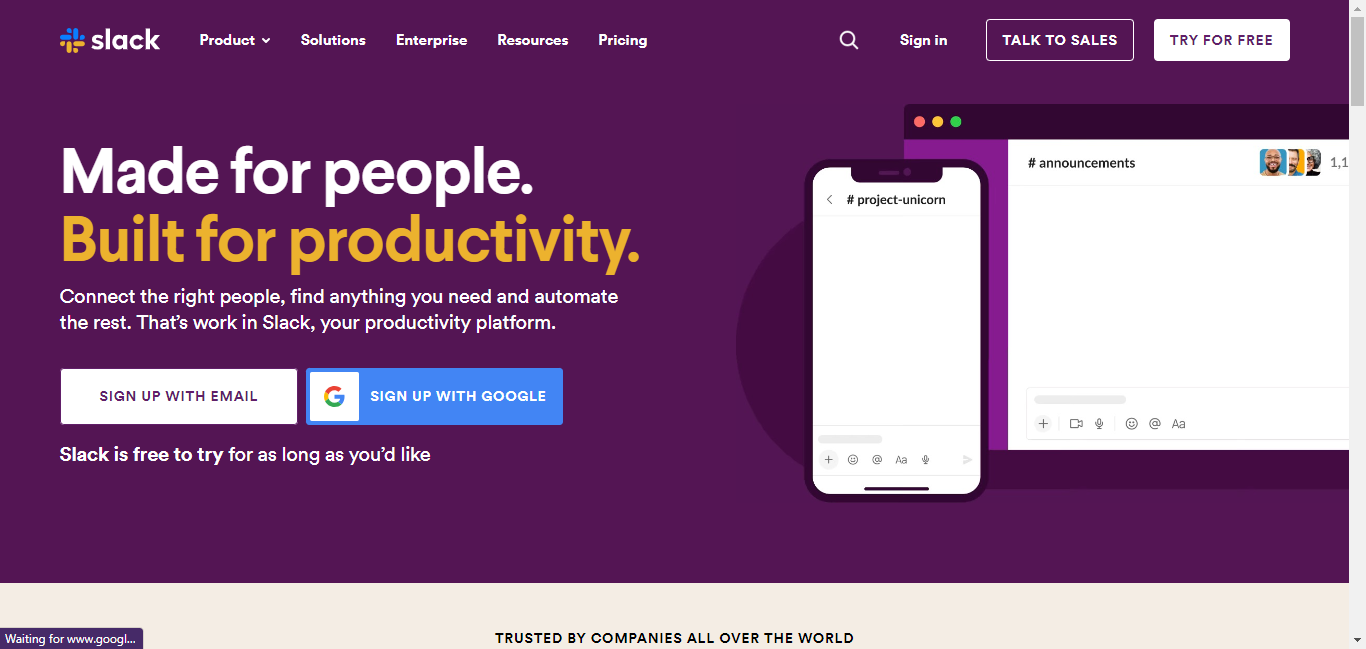
Real-time messaging lies at the core of Slack's functionality. With channels dedicated to specific topics, projects, or teams, Slack provides a structured yet flexible conversation space, eliminating the clutter and noise often associated with email chains.
It also allows you to start a huddle for quick discussions and screen-sharing, a feature my team loves and uses for daily meetings!
Slack goes beyond simple messaging by integrating with over 2,600+ third-party tools. From project management platforms like Trello and Asana to file storage systems like Google Drive and Dropbox, Slack seamlessly integrates with your existing workflow, consolidating all your team's essential tools in one centralized hub.
Key Features:
Direct messaging for one-on-one and team conversations
Threaded conversations for organized discussions
Record and send voice or video clips
Used across multiple devices and platforms
Enterprise-grade security that keeps your team's conversations confidential and protected
5. Microsoft Teams Chat
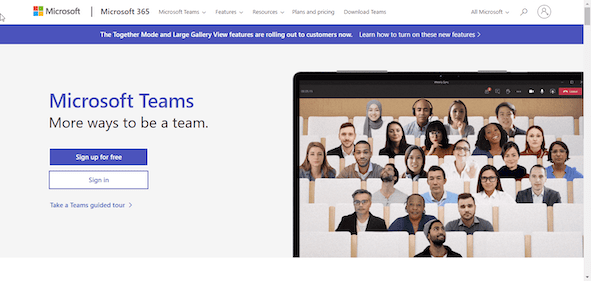
If your team already thrives on the Microsoft Business Suites, Microsoft Teams Chat is for you. Teams Chat offers threaded conversations within channels, ensuring that conversations stay relevant and easy to follow.
The search functionality in Teams Chat is a time-saver. You can locate conversations using a person's name or search for messages with specific keywords. You can also filter messages based on unread messages, @mentions, replies, and reactions, ensuring you get all the important updates.
Microsoft Teams Chat also lets you turn email threads into quick chats. You can easily interact and share files, and links and even express your thoughts with emojis, stickers, and GIFs in a user-friendly interface. No more combing through endless emails.
Key Features
One-on-one and group chats with channels for organized communication
Rich text formatting within chats with titles, bullet points, links, and quotes
Schedule message delivery for future dates
Convert a message in a group chat to a task
Integration with other apps through Zapier
6. Troop Messenger
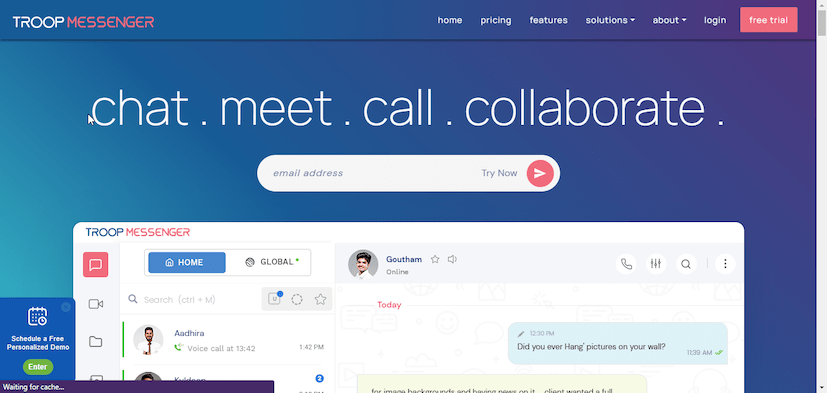
Troop Messenger is an intuitive instant messaging app designed to bring all aspects of remote interaction within a unified interface.
Teams using Troop Messenger can collaborate on various file types, from Docs, PDFs, PPTs, images, and videos, to URLs, without leaving the app's interface.
The software offers flexible service models to suit every business's needs. You can subscribe to its SaaS delivery model, host it on your on-premise servers, integrate APIs into your existing applications, or even have a custom app.
Key Features
One-on-one messaging
Group chat for collaboration
Audio & video calling
Screen Sharing
End-to-end encryption for all chats, calls, and file transfers
7. Chanty
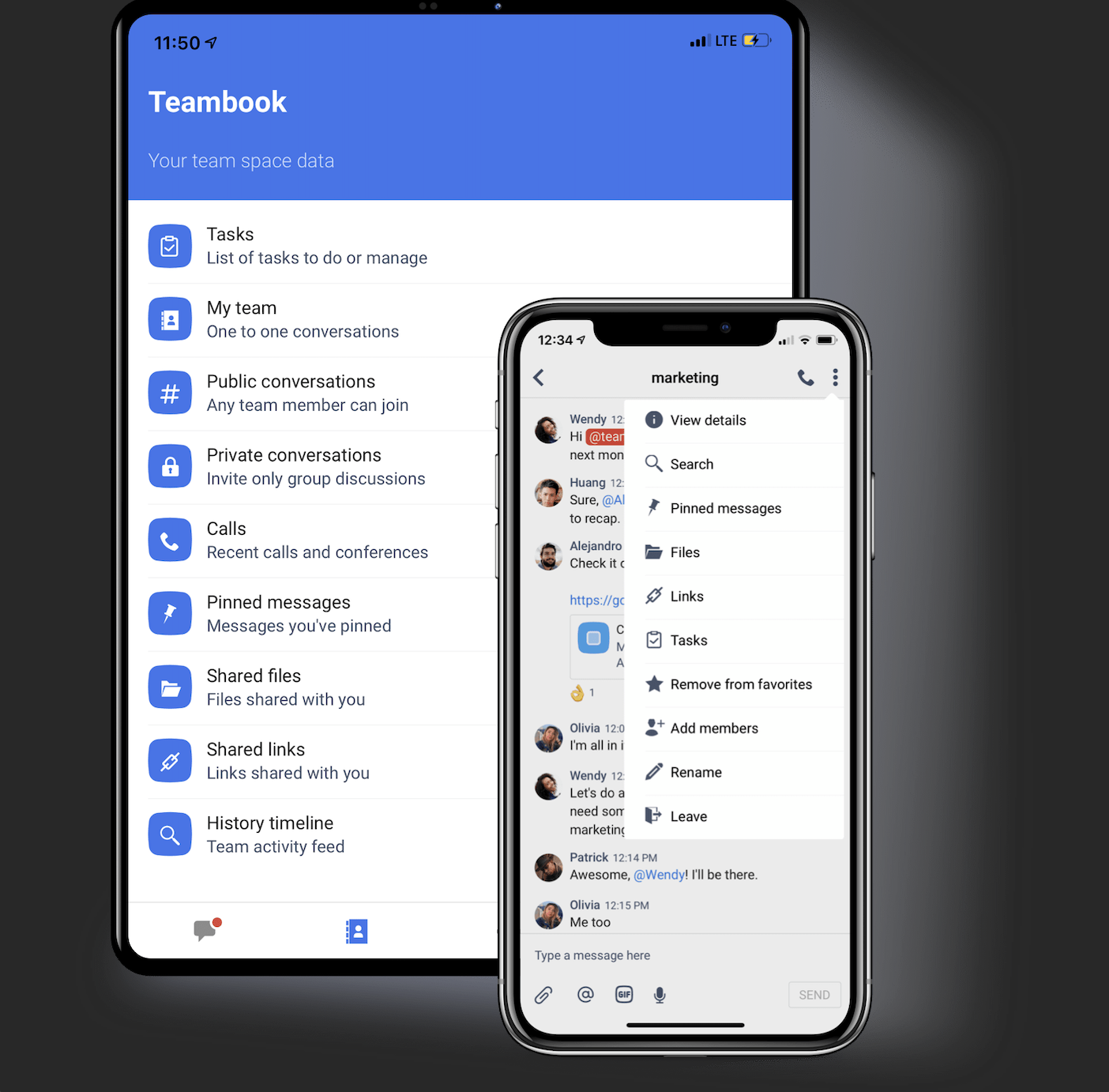
Chanty is a collaboration and productivity app that allows teams to communicate via messaging, audio, and video calling.
Chanty can also be used for task management. With the Kanban feature, you create to-do lists, assign tasks to employees, set deadlines, and track the progress. It can be integrated with other task management tools like Zapier and Trello.
Chanty's Teambook is a hub for tasks, conversations, calls, pinned messages, shared files, and links, all in one place.
Key features:
Unlimited instant messaging in both plans
Audio and video calling feature with screen sharing
Built-in task manager with the Kanban board
Voice messaging
2 remote desktop software
Remote desktop software is a crucial tool for remote working by allowing team members to access their office computers from anywhere worldwide. This seamless connection ensures access to office resources, such as files and applications, and eliminates the need for file transfers.
8. Microsoft Remote Desktop
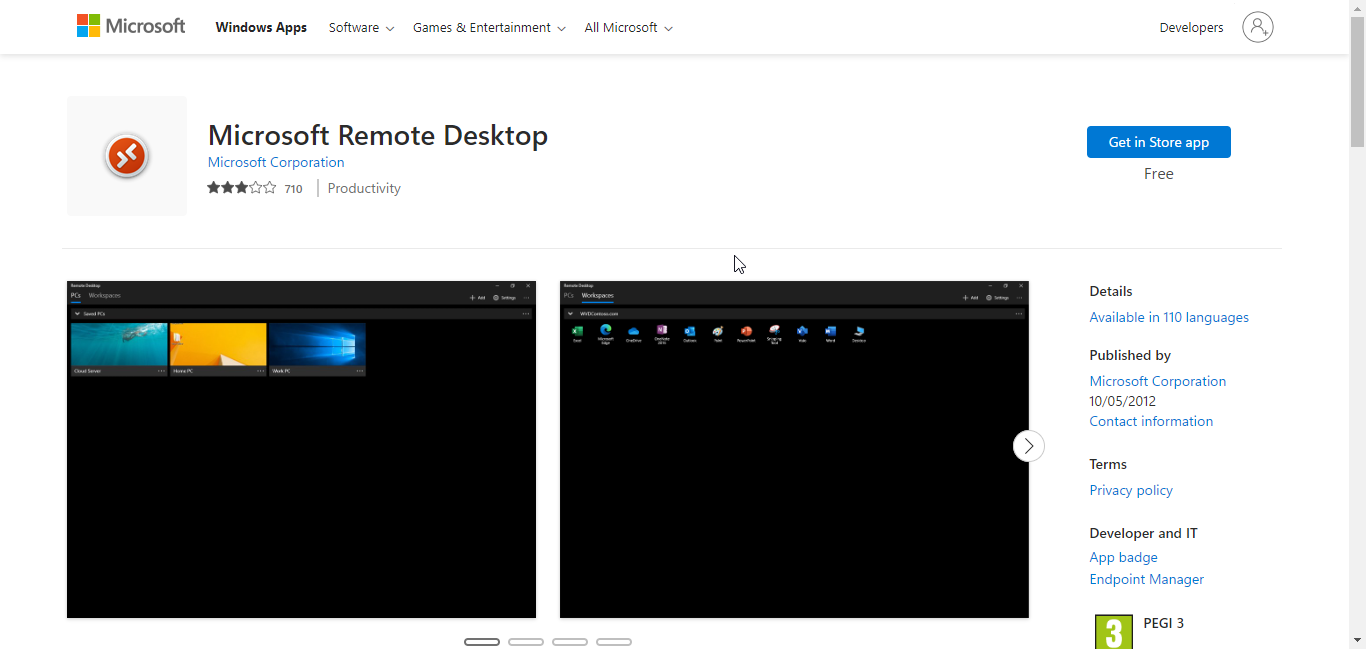
Microsoft Remote Desktop is a remote access tool that allows users to connect to another computer remotely from their device.
With Microsoft Remote Desktop, users can access resources such as files, applications, and network resources from a remote location, as if they were physically present at the remote computer.
Initially built for Windows PC, Microsoft has developed Remote Desktop clients for other operating systems, including Android, iOS, and macOS. It supports multi-session connections, meaning multiple users can connect to and work on one remote computer.
Key Features:
Transmission works well in low-bandwidth situations
Remote Desktop Protocol (RDP) minimizes data transfer and reduces latency
Encryption and authentication to prevent unauthorized access
Copy and paste text and files between the local and remote machines
9. TeamViewer Remote
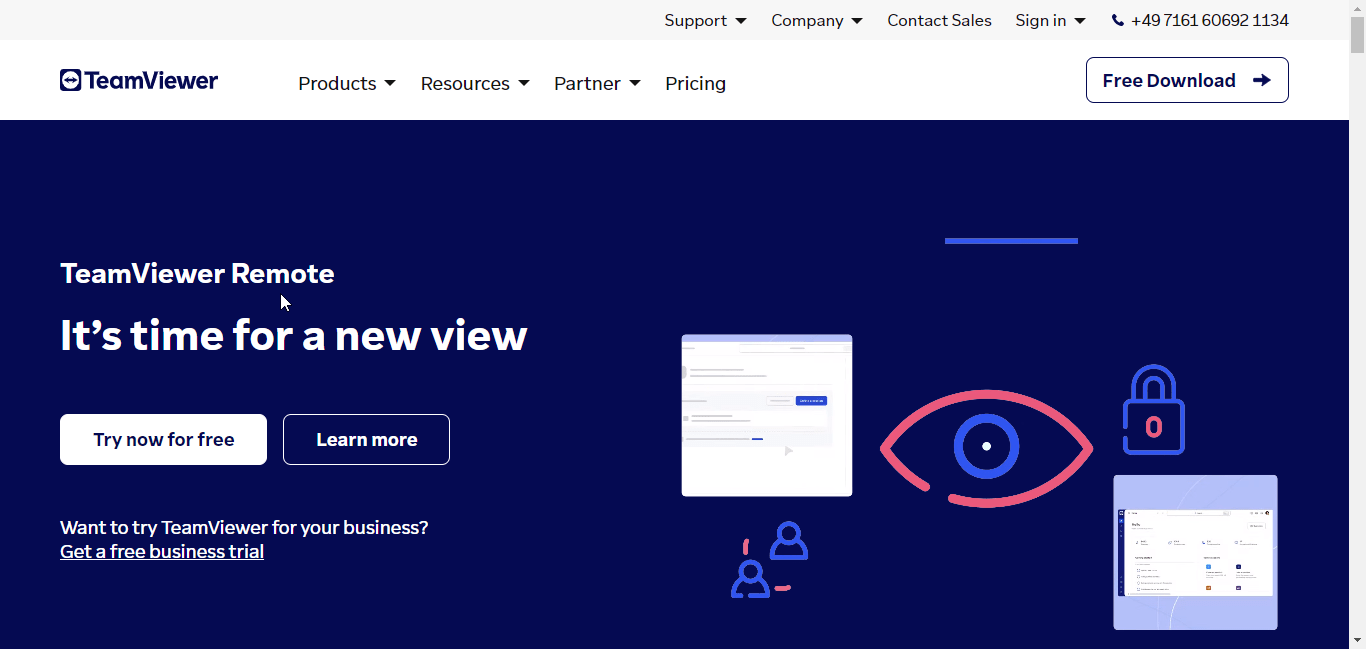
TeamViewer is the world’s most trusted remote desktop software with compatibility across Linux, Mac, and Windows.
For remote teams, accessibility and flexibility are essential for productivity. TeamViewer delivers on both fronts, allowing users to access files and applications on a computer from anywhere, anytime, on any device. It also supports multi-monitor access for multiple individuals to connect remotely and work on the same computer.
TeamViewer remains reliable and responsive whether working on a local home network or from a location with limited bandwidth.
TeamViewer offers enterprise-level security, including single sign-on (SSO) for user authentication, end-to-end 256-bit AES encryption, and more.
Key Features:
Swift file transfer between connected devices
Audio and video communication within the software
Cross-platform compatibility
Multi-monitor setup and remote printing
2 file sharing and storage tools
Every remote or hybrid team works with files. You need a reliable file management tool that works the way you work. Google Drive and Dropbox are the two leading apps for remote collaboration on files.
10. Google Drive
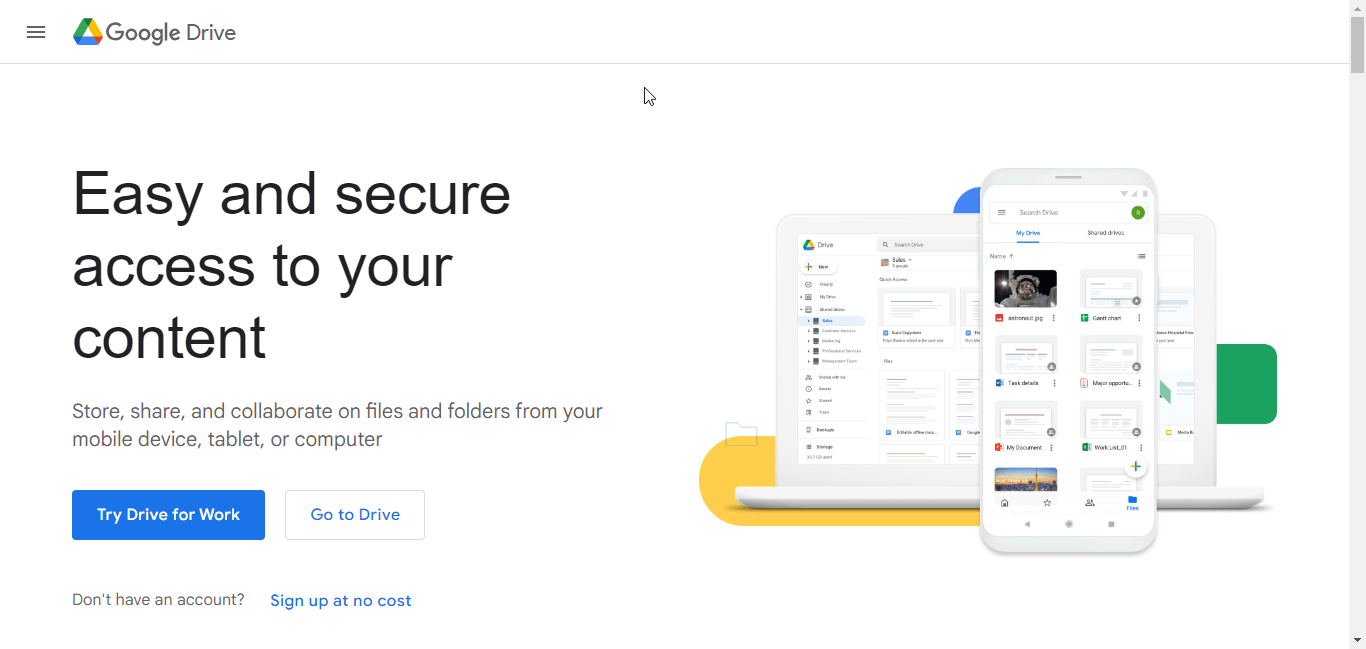
Google Drive is a cloud-based file storage app and one of our team’s favorites. With an initial free cloud storage capacity of 15 GB, which can be expanded as needed, your team is never limited by space to store files, including documents, photos, videos, and more.
Remote teams can simultaneously access and work on the same document from any device. Changes made to a file on one device and by any user will be reflected across all synced devices.
It's easy to share Google Drive files and control access. You can share files with your team via email or by generating a shareable link and setting permission for who can view, comment on, or edit the shared files.
Key Features:
Access and sync files across multiple devices
Real-time editing and chat
Create folders and labels to keep files organized
Integration with Google Apps, Docs, spreadsheets, Slides, and others
Version History to view and restore previous versions of files
11. Dropbox
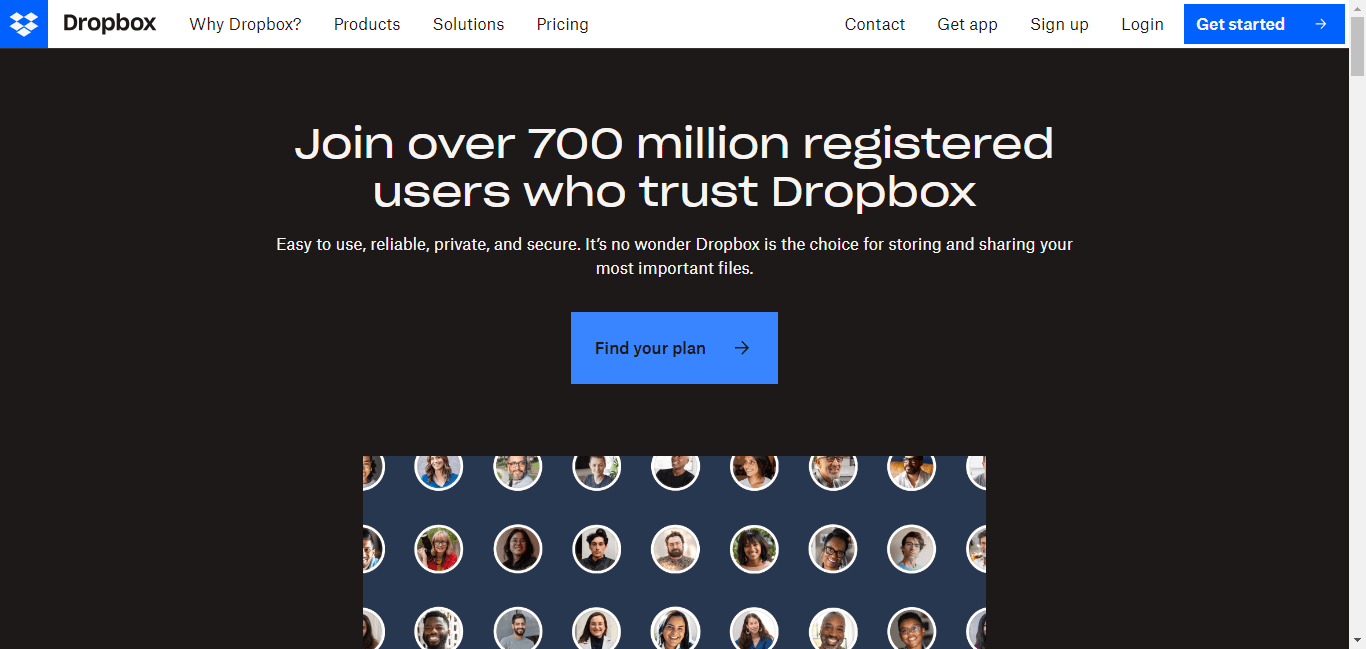
Dropbox is a cloud storage and file synchronization service with various invaluable features for remote teams to securely store, share, and access their files.
Unlike Google Drive, which has no local access, Dropbox provides a designated folder on the user's computer or mobile device and automatically syncs it with the cloud storage.
In case of accidental file removal, you can retrieve deleted files and restore older versions of files within 30 days. You can also password-protect your Dropbox files and folders without third-party software, ensuring only selected team members can access them.
Key Features:
Supports rich media embedding, task assignment, and advanced document controls
Store files as large as 2 TB each and sync at light speed
Support up to 200 file types
Offers legally-binding eSignatures
File and folder password protection
Integrate with popular productivity tools, including, Asana, Zoom, Slack, Trello, and Google Workspace.
2 project management software
For any remote or hybrid team to remain focused, accountable, and on track, it needs a structured platform for assigning tasks, setting deadlines, and tracking progress. That's where project management software comes to play.
It is the central hub for remote working, and every team needs one.
12. Asana
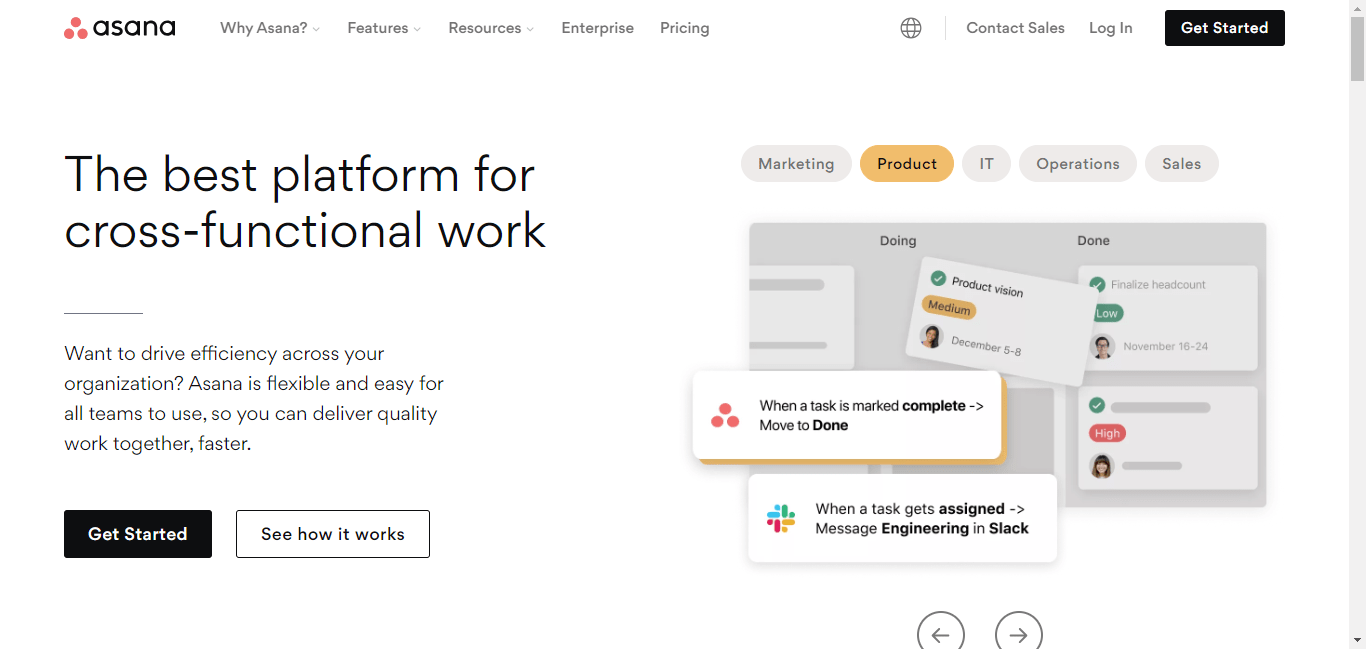
Asana is a web-based project management tool designed to help teams manage their work and collaborate more effectively.
Using Asana, you can create projects, assign tasks, set deadlines, and track the progress of the projects. It also comes with collaborative features that allow you to comment directly on a task, give feedback, and use the @mention to call individual team members' attention.
Users can integrate Asana with a range of other tools, such as Google Drive, Slack, and Microsoft Teams, to streamline their workflow and increase productivity.
Key Features:
Visualize tasks and deadlines in different views such as List, Calendar, and Board.
Automate repetitive tasks and workflows using Asana automation features.
Create forms to collect information or requests from team members or external stakeholders.
Offer insightful reporting and analytics of the project performance.
13. Notion
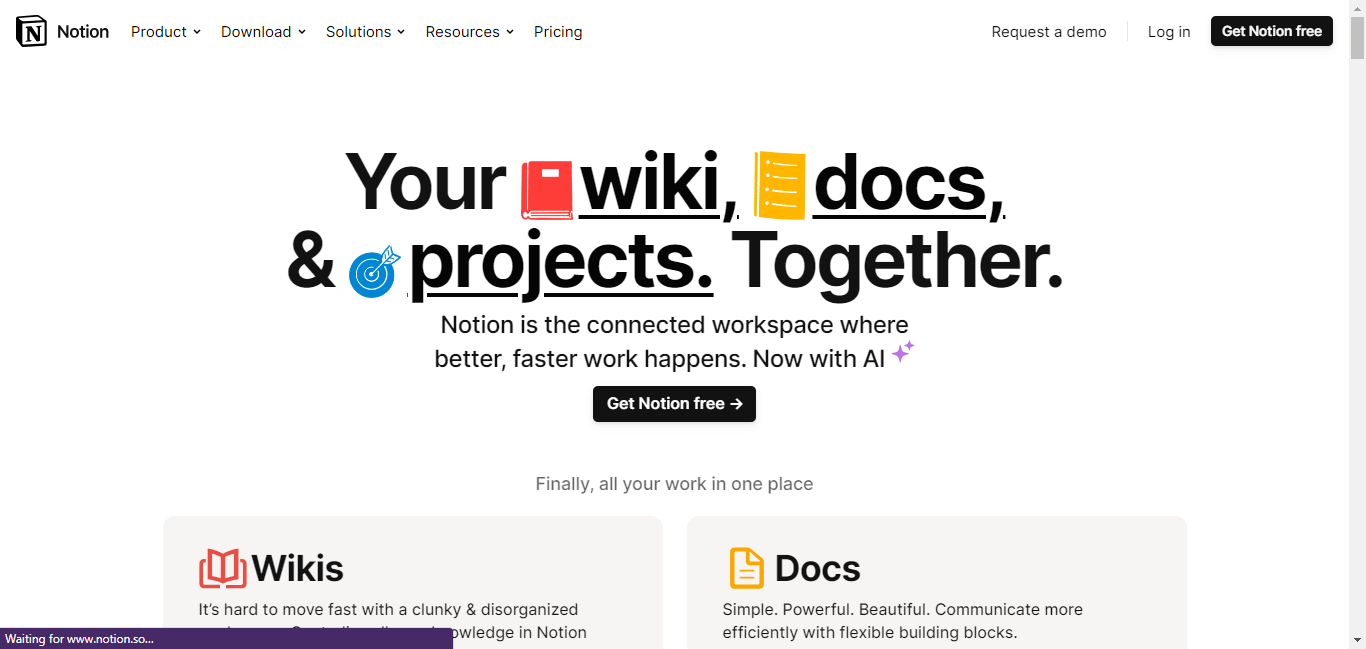
Primarily a note-taking app, Notion has evolved into a powerful project management tool with abundant project templates. It is ideal for small and medium-sized teams looking to manage all project-related information from a single dashboard.
Teams can create boards, lists, calendars, and timelines to effectively organize and track their work. With features like real-time editing, commenting, and @mentions, Notion helps remote teams stay updated on project progress and work together seamlessly.
Key Features:
Automate tedious tasks with Notion AI
A vast library of templates and pre-built blocks
Customize the appearance of your workspace with themes, color schemes, and fonts.
Tags and filters for easy organization and sorting.
14. Field Promax
Field Promax is built to help your team manage field service tasks efficiently. From real-time scheduling and dispatching to detailed work order tracking, it provides the tools you need to stay on top of every job.
With a mobile-friendly design, technicians can easily access job details, update job statuses, and capture customer signatures directly from their smartphones. This ensures smoother communication and faster task completion without any paperwork hassles.
Field Promax integrates with both QuickBooks Online and Xero, offering flexibility in managing your finances. These integrations let you track payments, invoices, and expenses with ease. Additionally, its reporting tools provide valuable insights into team performance and business operations.
Key Features
Real-time job scheduling and dispatching
Easy-to-use mobile app for field technicians
QuickBooks Online and Xero integration for financial management
Work order tracking and updates in real-time
Customizable reports for tracking performance
Whether you’re running a small team or managing a growing business, Field Promax keeps your operations organized and effective.
Check out our guide to the top meeting notes apps that are packed with features to boost your meeting productivity.
2 design collaboration tools
Managing design projects in a remote setup typically requires input from multiple stakeholders.
However, the more contributors a project has, the harder it becomes to streamline the process. With the right design collaboration tools, you can stay on top of things and make your team hyper-productive.
15. Miro
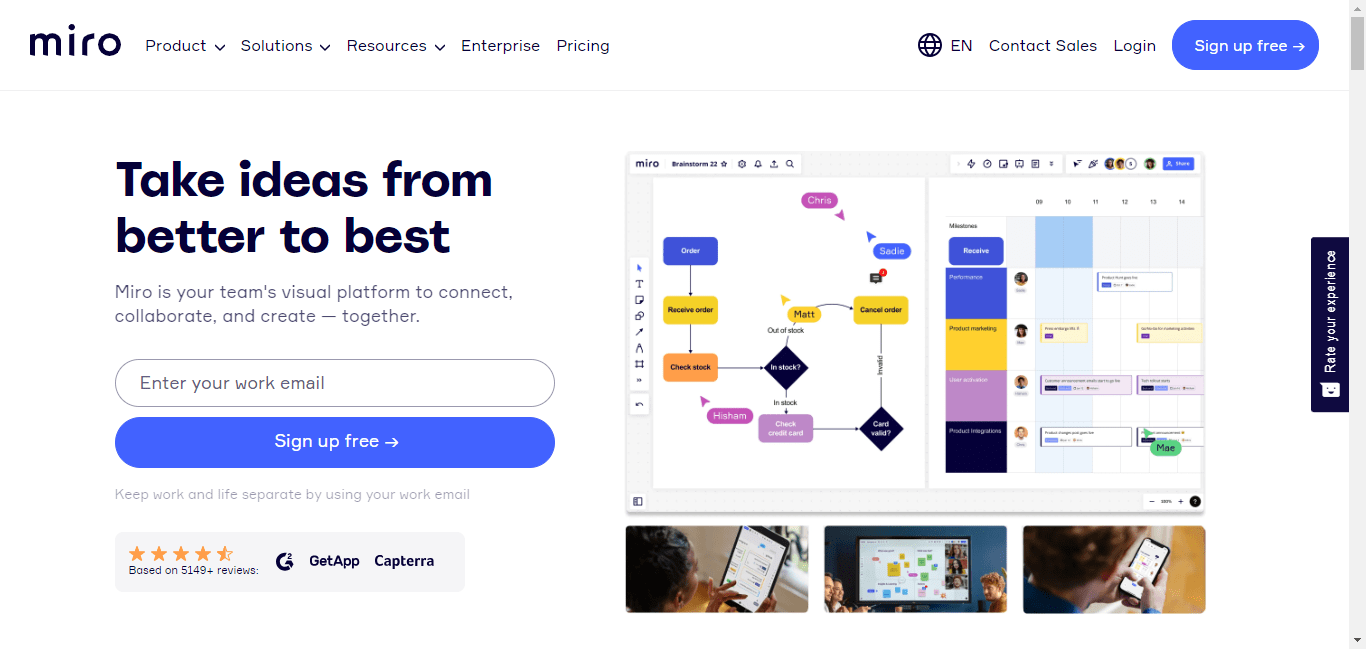
With over 50 million users worldwide, Miro is the world's go-to platform for collaborative whiteboarding, allowing teams to go from ideations to visually stunning presentations in minutes.
Teams using Miro don’t design from scratch. Miro has a vast library of templates covering many use cases, from mind maps and flowcharts, to double diamonds.
Miro's support for real-time collaboration and asynchronous usage makes it a perfect fit for remote teams. It is ideal for brainstorming, designing, and mind mapping in a remote workspace, thanks to its infinite canvas.
Key Features:
Infinite canvas to create org charts, process maps, and diagrams
Integrations with productivity tools like Slack, Jira, Google Drive, Sketch, and more
Flowchart maker with tons of time-saving templates
Spreadsheet support
16. Figma
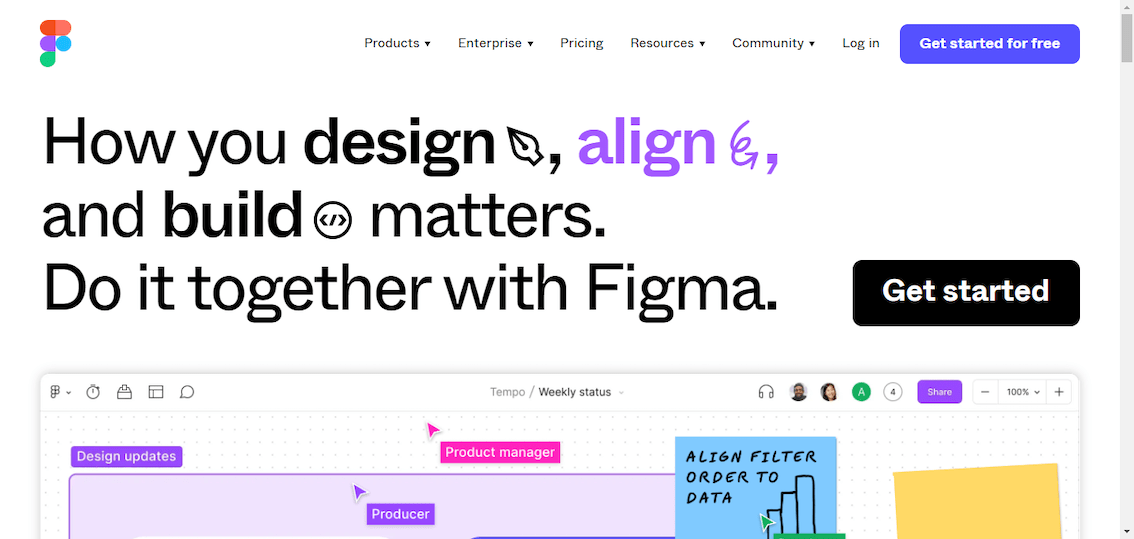
Figma is a collaborative design tool for creating prototypes, wireframes, and mockups.
One of the key benefits of Figma is its ability to facilitate collaboration among multiple contributors. Users can invite team members to work on a design project in real-time, enabling them to work together seamlessly and stay in sync throughout the design process. Each contributor has their own designated part of the design, and all changes made by team members are automatically updated in real-time.
Figma also keeps a detailed history of design changes, allowing designers to review, revert, or compare versions of their designs.
Key Features:
Cloud-based collaboration
Responsive design prototypes
Available as a web application, as well as on macOS and Windows
Extensive template library
Real-time project updates and feedback
2 focus apps
Staying on task while working from home is a big challenge for remote teams. From phones to TVs, kids, and partners, there's an abundance of distractions to help you slack.
In research by SellCell, 80% of remote workers admit to slacking off at work. As a manager, you can help your team remedy this problem by introducing focus apps.
Focus apps are digital tools designed to help individuals manage time, maintain focus, and increase productivity.
17. Toggl Track
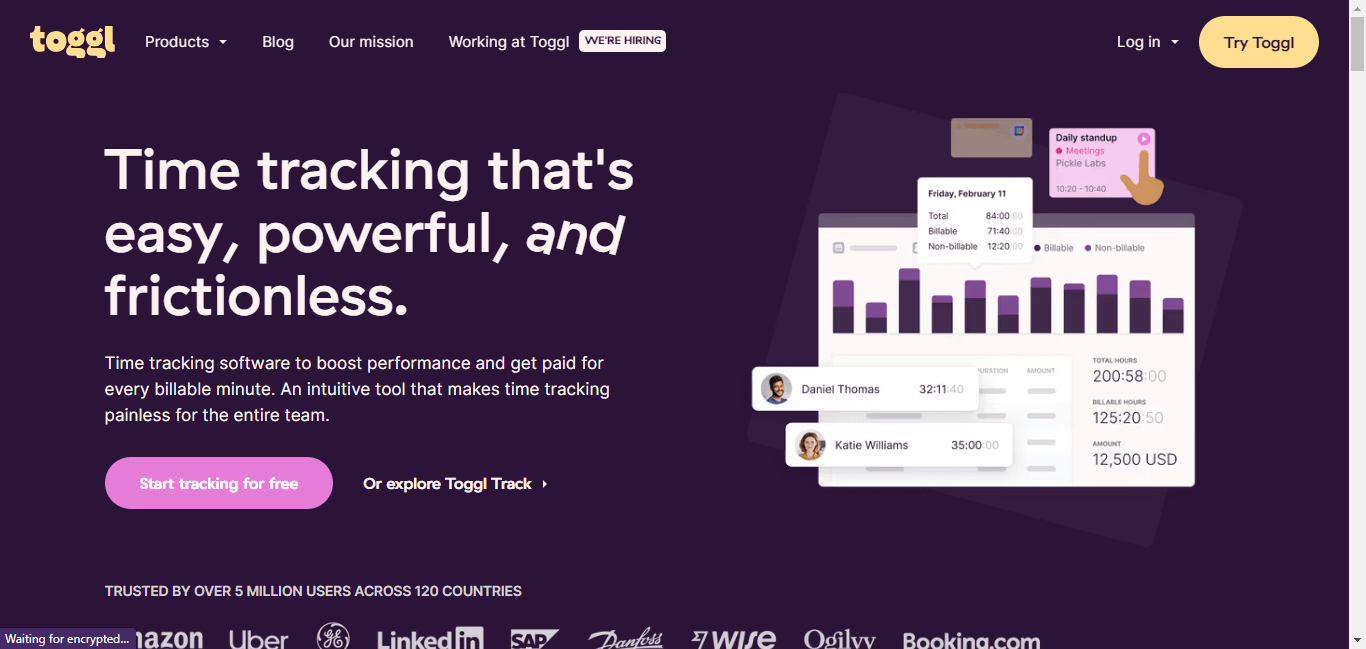
Toggl is a powerful time-tracking software with automated accounting features. Whether your team works on browsers, desktops, or mobile apps, Toggl helps you track time wherever you work.
With Toggl, you get complete control over your team's time management as they can easily track time spent on different tasks and projects, providing valuable insights into productivity.
Toggl offers the ability to mark time entries as billable, making it easy to track billable hours for clients or projects.
Toggl enables individuals to start and stop timers easily, switch between tasks, and analyze time data through detailed reports and visualizations. Toggl Analytics feature makes it easy to identify bottlenecks and make informed decisions.
Key Features:
Generate reports based on specific periods, projects, clients, or team members.
User-friendly interface to start, stop, and switch timers.
Manually enter time entries for tasks completed offline or outside the Toggl app.
Integrate with 50+ tools, including project management, communication, and calendar software.
Set reminders and receive notifications.
18. Focus Bear
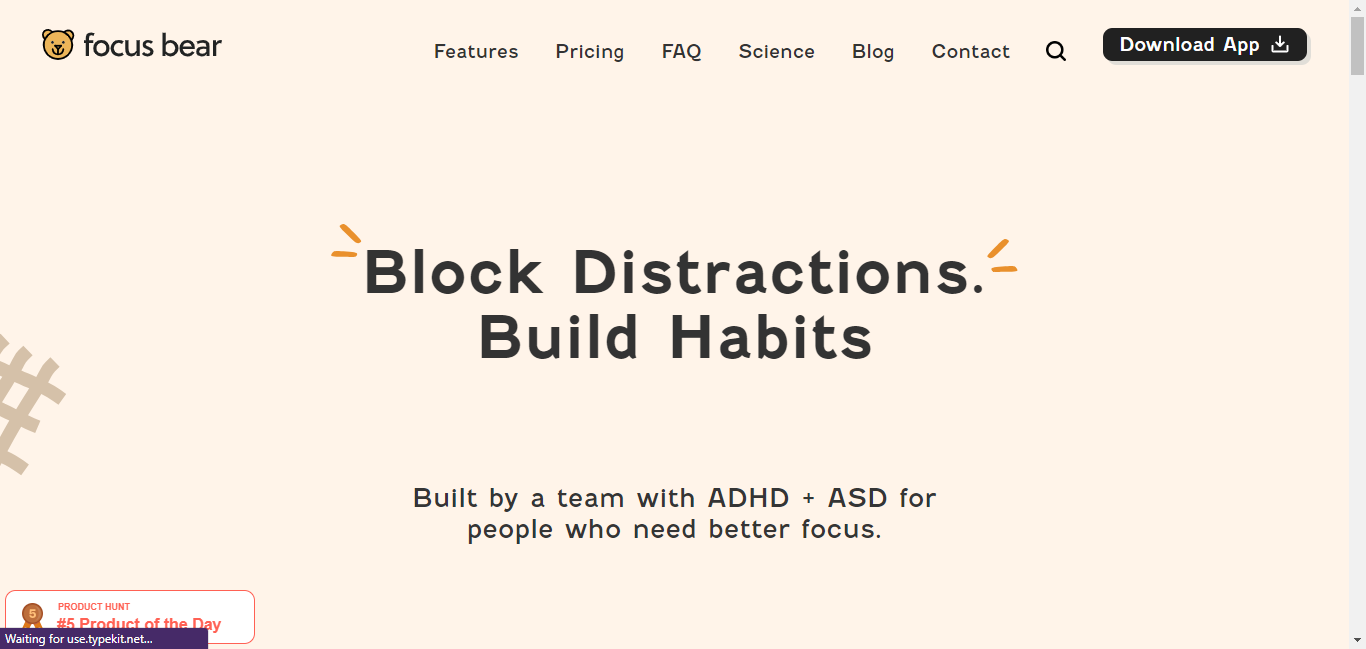
Created based on lived experience, neuroscience, and psychology research, Focus Bear is a focused app designed to help individuals build better daily habits and routines that boost productivity.
It helps create a distraction-free work environment by blocking distractions across all your devices, whether you're using a Mac, Windows, Android, or iOS, thus helping you get into deep work.
The app allows users to set and monitor daily goals and provides visual progress indicators- a powerful motivator for individuals to keep going.
Focus Bear also reminds you to take regular breaks so hyperfocus doesn't burn you out without being intrusive. You can customize intervals for focus sessions and rejuvenating breaks.
Key Features:
Set daily goals and allocate time to complete them.
Create and track daily habits.
Block distractible websites and apps on all your devices.
Real-time guide on building productive habits.
Sum up
The future of work is remote and hybrid, and the right set of tools is the key to unlocking the full potential of remote teams.
We've presented a comprehensive list of 16 top remote work tools for any distributed workforce to work together seamlessly, foster collaboration, maintain productivity, and smash goals. With the right combination of these tools, achieving success in the remote work environment is within reach.